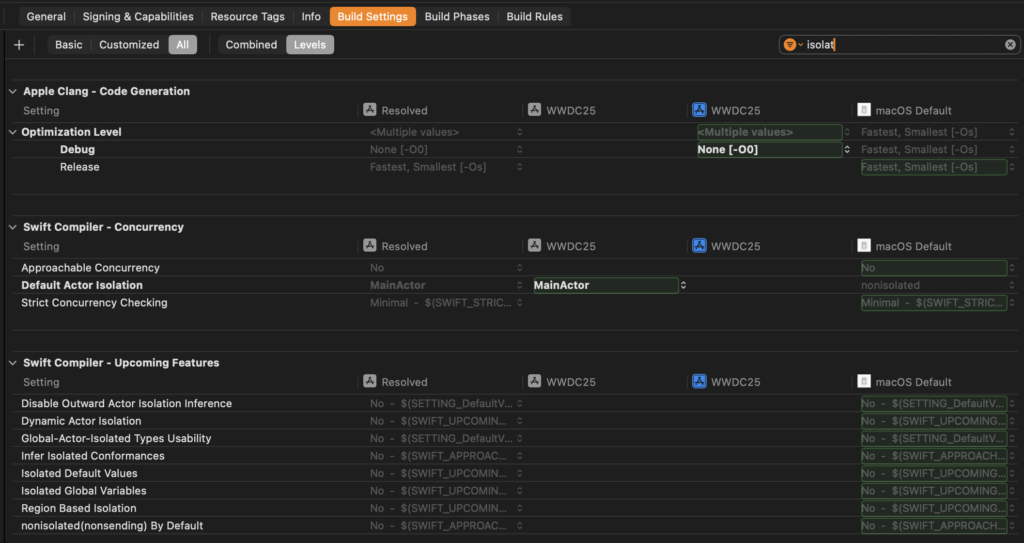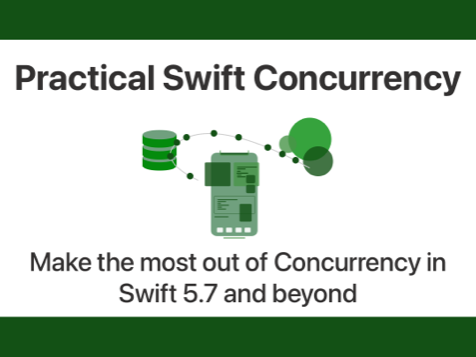Setting default actor isolation in Xcode 26
Published on: June 10, 2025With Swift 6.2, Apple has made a several improvements to Swift Concurrency and its approachability. One of the biggest changes is that new Xcode projects will now, by default, apply an implicit main actor annotation to all your code. This essentially makes your apps single-threaded by default.
I really like this change because without this change it was far too easy to accidentally introduce loads of concurrency in your apps.
In this post I'd like to take a quick look at how you can control this setting as well as the setting for nonisolated(nonsending) from Xcode 26's build settings menu.
Setting your default actor isolation
Open your build settings and look for "Default Actor Isolation". You can use the search feature to make it easier to find the setting.

New projects will have this set to MainActor while existing projects will have this set to nonisolated. I highly recommend trying to set this to MainActor instead. You will need to refactor some of your code and apply explicit nonisolated declarations where you intended to use concurrency so you'll want to allocate some time for this.
MainActor and nonisolated are the only two valid values for this setting.
Enabling nonisolated(nonsending)
Another feature that's introduced through Swift 6.2 is nonisolated(nonsending). This feature makes it so that your nonisolated sync functions automatically inherit the calling actor's isolation instead of always running on the global executor without being isolated to any actor. To get the old behavior back you can annotate your functions with @concurrent. You can learn more about this in my post about Swift 6.2's changes.
You can turn on nonisolated(nonsending) in one of two ways. You can either enable the feature flag for this feature or you can turn on "Approachable Concurrency".

WIth Approachable Concurrency you will get nonisolated(nonsending) along with a couple of other changes that should make the compiler smarter and more sensible when it comes to how concurrent your code will really be.
If you're not sure which one you should use I recommend that you go for Approachable Concurrency.


